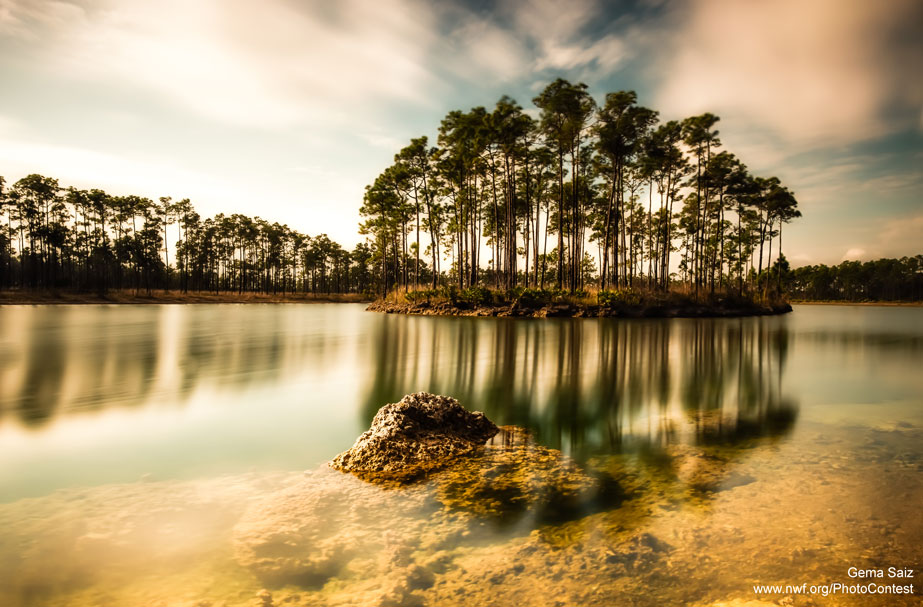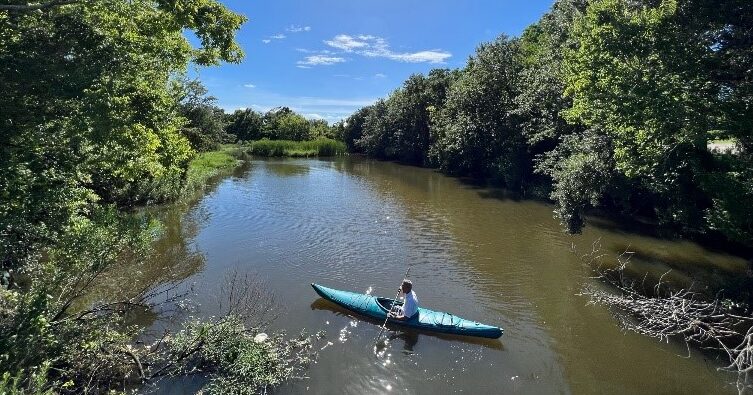We have much more to do and your continued support is needed now more than ever.
Are Real or Fake Christmas Trees Better for the Environment?
Displaying and decorating evergreen trees is an age-old holiday tradition originating in the northern Europe to bring comfort and joy during the frigid dark of winter. According to the National Christmas Tree Association, over a hundred million households in America choose to put up a celebratory tree in their homes during the year-end holiday season. Between 25-30 million real, natural trees are sold each year, but artificial trees—factory made rather than earth grown—are becoming ever more popular.
Approximately 75% of Americans who have a tree now have an artificial one. Some claim that purchasing an artificial tree is actually better for the environment than buying a new living tree each year, given enough time. But can this be true? In the long run, are fake Christmas trees more environmentally friendly than real ones?
The Life of a Christmas Tree
Answering such a complex question begs some familiarity with the life of a Christmas tree—real or fake. Both production options use large amounts of land and resources, but in different ways.
Natural evergreen Christmas trees are grown on farms throughout the country, but the majority of them are cultivated in Oregon and Washington. Trees are usually grown to about six and a half feet before harvest, a process that takes about 12 years and plenty of supplemental water and nutrients. Once fully grown, the trees are harvested and shipped by truck to retailers.
available every year. Credit: USDA Natural Resources Conservation Service
Most Americans purchase their trees shortly after Thanksgiving, and keep them around until the end of the year. Afterward, the natural tree must be disposed of. We have three options for this in the United States: incinerating the tree, composting it, or taking it to a landfill.
Artificial trees, on the other hand, are meant to last anywhere between five and ten years. Artificial trees are manufactured from several types of plastic and metal. Processing these components takes significant energy, and causes significant pollution.
even berries. Credit: Wikimedia Commons
About 80% of the world’s artificial trees are produced in China, meaning they must take a long journey to reach retailers. Finished trees are transported by truck from factories in China to a nearby port, where they are shipped to the U.S. From there, the trees are transported by truck to retailers across the country.
Global Impacts of Tree Farms and Factories
Unfortunately, whether grown on a farm or crafted in a factory, cultivating Christmas trees has the potential to do some harm to the planet. But which is less harmful?
The environmental benefits of an artificial tree come from its ability to be re-used in successive years, while natural trees must be disposed of and re-acquired each year. It turns out that many of the negative environmental impacts of natural Christmas tree farms come down to the tree’s method of disposal— landfilling, composting, or incineration.
Large swaths of trees, like Christmas tree farms, act as what we call a ‘carbon sink.’ As these trees breathe, they absorb carbon dioxide from the atmosphere. Because carbon dioxide is a greenhouse gas linked to climate change, having large swaths of forested land can be beneficial for the planet as a whole.
If a Christmas tree is left in a landfill at the end of the year, the tree does not break down quickly, if at all. It eternally retains its stored carbon, keeping it out of the atmosphere. If it is collected and disposed of by a compost or chipping service instead, some but not all of that carbon will be broken down by soil bacteria and invertebrates. Fire, on the other hand, releases all of the carbon stored in plants, so incinerating a Christmas tree will release greenhouse gases back into the environment and speed global climate change.
So what is the best option for discarding a natural tree? In terms of reducing carbon footprint, the worst thing you could do is incinerate your tree. The best thing you could do is dump your tree in a landfill—but that comes with its own issues, of course. Aside from reducing habitat for wildlife, landfills tend to pollute nearby fresh water with ammonia and cause toxic algal blooms which kill fish and other aquatic animals.
A better option might be to adopt the happy medium. Composting your tree has a better carbon footprint than incinerating it, and is less likely to dump toxic chemicals into the ecosystem than leaving it at a landfill. Many cities in America offer free composting or chipping services for Christmas trees, and give away the compost or wood chips they produce to local farmers and gardeners.
In the end, the American Christmas Tree Association reports that in terms of reducing global environmental impact, in many ways artificial trees eventually do outpace natural trees. In general, when used for at least 5-10 years, artificial trees have less negative global impact than natural trees. Over that time, artificial trees end up requiring less energy and contribute less to air pollution. They also end up having a smaller carbon footprint compared to natural Christmas trees, assuming they are composted or incinerated.
The Importance of Habitat
You might assume that things end there; that artificial trees are indeed the better option. But unfortunately, this impact analysis has left out one major part of the equation—habitat.
Habitat loss is listed as a primary threat to 85% of all species on the IUCN’s red list, and is likely the greatest threat to wildlife today. And unlike the factories that produce artificial Christmas trees, natural tree farms provide good-quality habitat to many species.
Different species of wildlife will live in a forest over the course of its lifecycle. Although it may seem that forests are a stable, unchanging type of habitat, they aren’t—they just take a long time to grow into mature forests and during that time they change significantly. An area of land becomes forested over about a hundred years, passing through many phases, or forest types, that all offer unique habitat structure for different kinds of wildlife. This transition through phases over time is called forest succession.
Many species will only use a forest during its earlier phases of succession. Common yellowthroats, for example, are considered early-successional forest birds. These species are common in forests only during its first 1-12 years of growth. Once the trees become too mature and the habitat too crowded with vegetation, they must leave in search of a new, young forest patch.
Young forest specialists such as the yellowthroat depend on disturbance events to clear out space for them to exist. Natural disturbance events usually come in the form of fires, floods, or avalanches. But if managed correctly, tree farms can provide the same service by harvesting trees for sale. Smart farmers will rotate harvest through different tree patches to ensure 12-year-old trees are ready every year, and by doing so, they ensure that early-successional species always have some usable habitat available.
In some cases, the biodiversity of animals living in Christmas tree plantations is even higher than what you might find in adjacent open grassland or dense forest habitats, especially for threatened and endangered species that only live in young forests. Scientist believe that this is because such farms represent several successional forest stages with a variety of habitats and food available for use, whereas surrounding habitat may not be exposed to the natural disturbances required for forest succession. This tends to happen when forest fires are suppressed to protect nearby human settlements.
While it might be ideal for this land to be preserved as natural, pristine habitat, plantations are not the worst option for wildlife in a developing world. As a direct competitor of agricultural and industrial development, Christmas tree farms protect and provide green space where alternatives would not.
The Best Tree for Wildlife
So in the end, which is better for the environment—natural or artificial trees? The answer depends on your own priorities for what is best for the environment. If your goal is to reduce global energy use and help curb the world’s carbon emissions, a long-term artificial tree may be best for you. If kept for at least 5-10 years, artificial trees ultimately leave less of a carbon footprint than natural trees that are composted or incinerated each year.
If your goal is instead to support local wildlife and help the world retain its biodiversity, a natural tree is a better option. Just remember that your disposal method matters! We suggest composting, which releases less greenhouse gas than incineration and less toxicity than landfilling. This could mean arranging for a city compost service to pick up the tree and dispose of it for you, or chipping your tree yourself and using for your own landscaping purposes. For some suggestions on other wildlife-friendly ways to recycle or reuse your old tree, check out our previous article here.





















